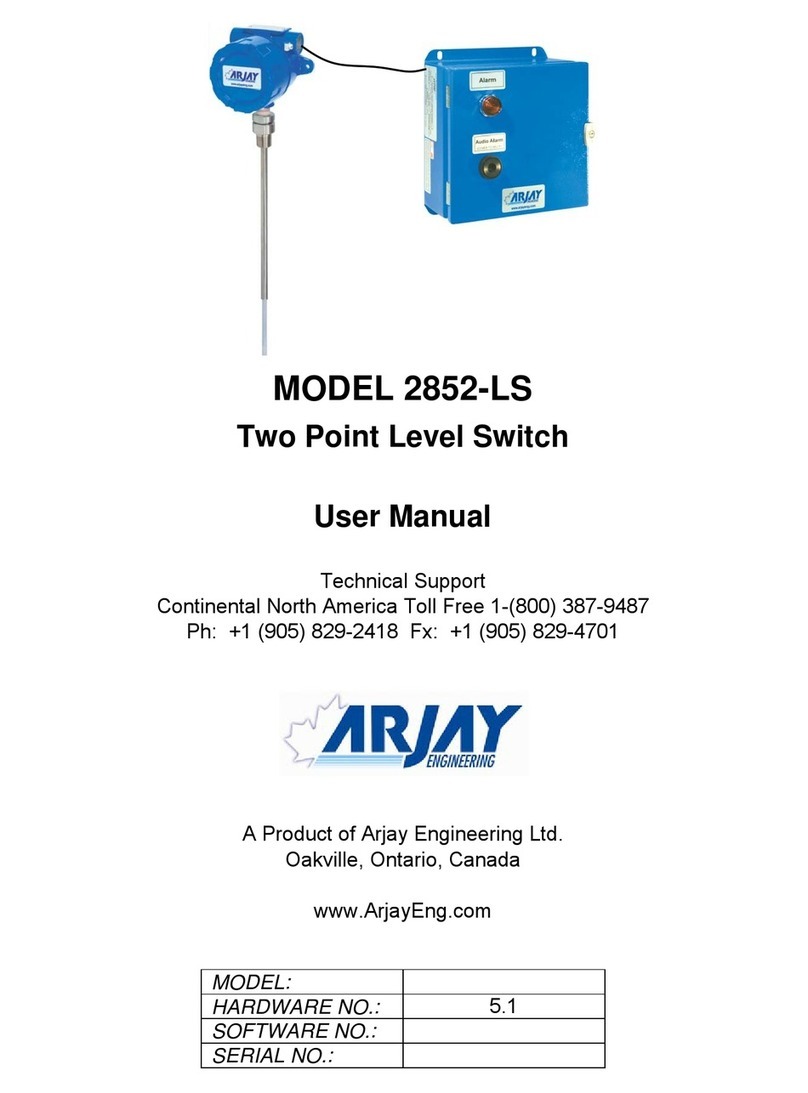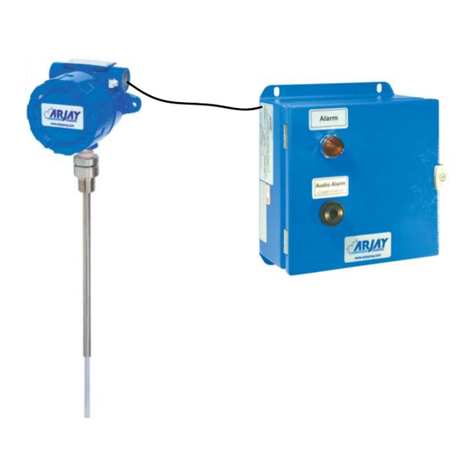
Model: 2852-IFA User Manual Rev: 2.2
3
1.0 INSTRUMENT OVERVIEW
The Arjay Model 2852-IFA Liquid Interface Alarm provides a means for detecting the change from
one liquid to another liquid of a different dielectric, such as water to oil. The capacitance sensing
probe can be submersed in any liquid type and in any vessel style such as a pipe, tank and pit.
The Arjay probe is an active capacitance sensor that is tuned to the fluid dielectric. As a liquid
interface or fluid phase changes to a differing dielectric, the probe capacitance changes.
The remote mounted Arjay 2852 controller monitors the capacitance change of the probe and
activates relay contacts for use with alarms, pumps, valves, etc. In interface applications such as
monitoring for water condensate in fuel tanks, an alarm will occur when the interface crosses
approximately 2mm of active probe. In phase and emulsion change applications such as water to
oil in a pipe, approximately 5% concentration change will activate the alarm. The % change
required can be affected by the emulsion, the fluid types, the piping, etc..
The complete 2852-IFA system consists of the probe, the PMC card, and the 2852 controller.
The standard probe is a Teflon coated stainless steel rod with stainless steel fitting. Probes can be
be inserted vertically, horizontally or angled into the vessel. For top mount insertions, an inactive
sheath on the air exposed portion of the probe is required. The active portion of the probe must be
submerged in liquid at all times. If exposed to air, an nuisance alarm may occur.
The PMC (Pulse Module Circuit card) is installed at the probe and translates the capacitance signal
from the probe into a frequency pulse, which can then be transmitted up to one kilometer to the
2852 controller via 2-wire shielded cable.
The model is intended for use in General Purpose non-hazardous areas. For hazardous location
use refer to Arjay Engineering Ltd. For appropriate model.
1.1 Features
Microprocessor based capacitance Controller
Relay and discrete 4/20mA alarm output
Modbus protocol via RS-485 for access by Arjay handheld, Central Access Panel or
compatible system
Local Auto calibration or remote calibration via network
User specified custom features may be added by contacting Arjay Engineering Ltd.
1.2 Model Number vs. Voltage Input
2852-IFA-1 100-240 VAC power input
2852-IFA-3 12 VDC power input
2852-IFA-4 24 VDC power input






























